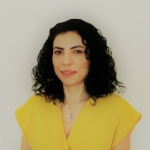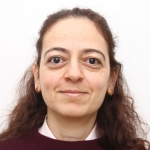From 1 January 2024, seven new University of Twente CEE-Teaching & Learning Fellows have been appointed for two years.
The theme for this cohort’s T&L Fellowship is Building inclusive communities. The goal of the Teaching & Learning Fellows program is to ascertain that staff is stimulated to pioneer in educational R&D activities that can advance their professional development and help improve education regarding aspects that are on the educational agenda of the UT.
This cohort’s T&L Fellows are:
Senior Teaching & Learning Fellows;
- Fulya Kula (Faculty of Electrical Engineering, Mathematics and Computer Science)

The University of Twente's Bridging Course, backed by 4TU.CEE, is set
to revolutionize digital supportive education for first-year university
students. This initiative holds promise not only for various
departments at UT but also for other universities. The fellowship's core
motivation is to enrich the 'Bridging Course' at UT, shaping it into an
inclusive and dynamic learning environment. The focus includes
improving custom course content and fostering interdisciplinary
collaboration within UT. The ultimate objective is to bridge the high
school-to-university mathematics gap, aligning with UT's educational
agenda. Early work on the Bridging Course showcases a scholarly
commitment, and the fellowship aims to amplify collaborations, publish
research, and explore various opportunities. (
www.utwente.nl/bridge)
- Gabriëlle Tuijthof (Engineering Technology Faculty)
Teaching & Learning Fellows;
- Francesca Toso (Engineering Technology Faculty),
- Lerna Pehlivan (Faculty of Electrical Engineering, Mathematics and Computer Science),

This project involves the
development of a repository of interactive 3D-graphs and animations that
emphasize the core ideas of mathematical concepts covered in a Calculus
2 course for engineering students. Students comprehend mathematical
concepts in a variety of ways. Traditionally, math education has relied
heavily on static figures and graphs. However, many students learn more
efficiently through interacting with such graphs and diagrams, for
example, by changing the viewing angle, zooming in and out, or observing
changes in the graph by manipulating one or more parameters. Advances
in mathematical software allow for the creation of such interactive
graphs and animations, which foster understanding of mathematical
concepts in particular for problems of higher dimensions and for visual
learners. The outcome of this project will innovate the Calculus 2
course delivery by blending these new visualizations of mathematical
concepts into our current teaching model to create a more inclusive
learning community for students with non-traditional learning styles.
- Kirsten Stadermann (Behavioral, Management and Social Sciences Faculty),
- Sissi de Beer (Faculty of Science and Technology),
- Wietske Bijker (Faculty of Geo-Information Science and Earth Observation).







